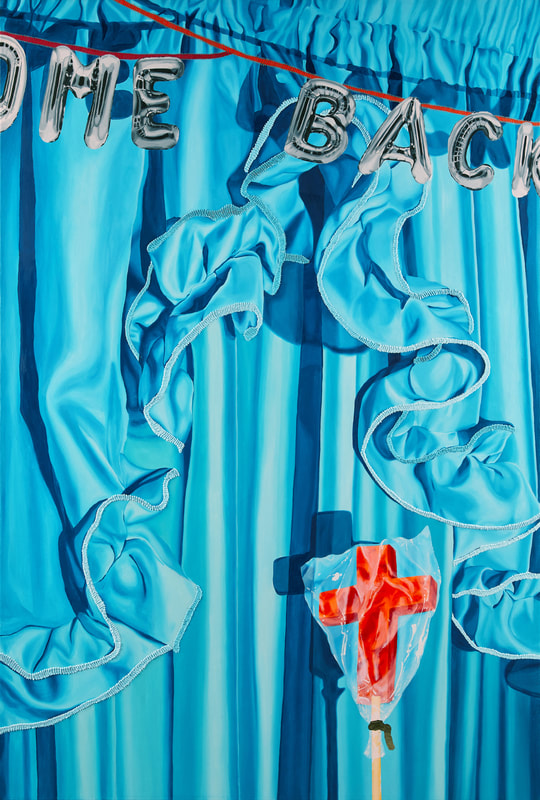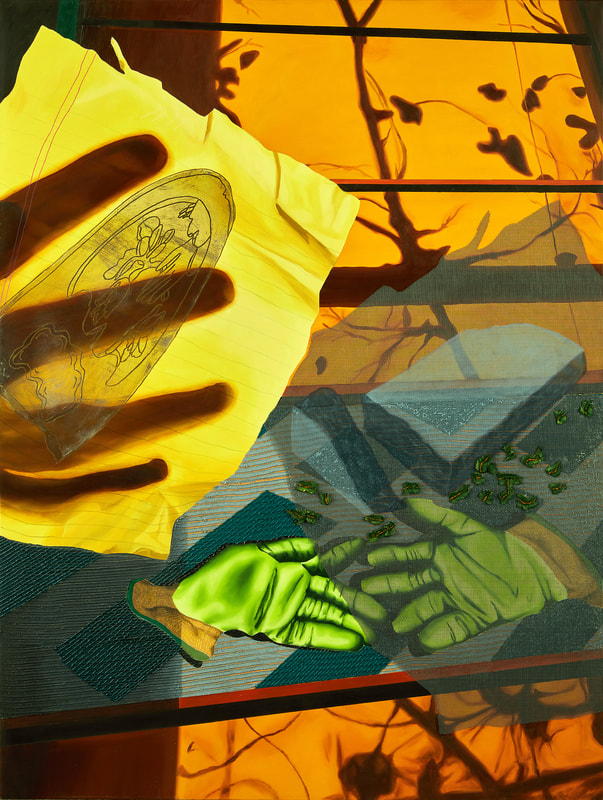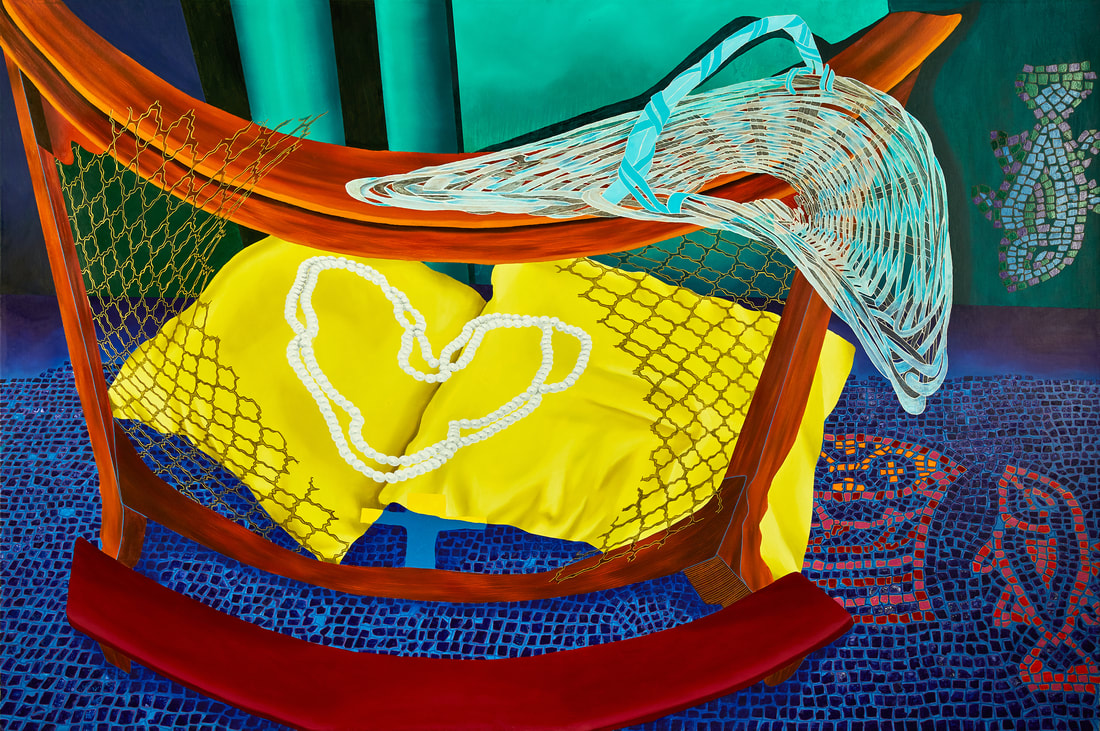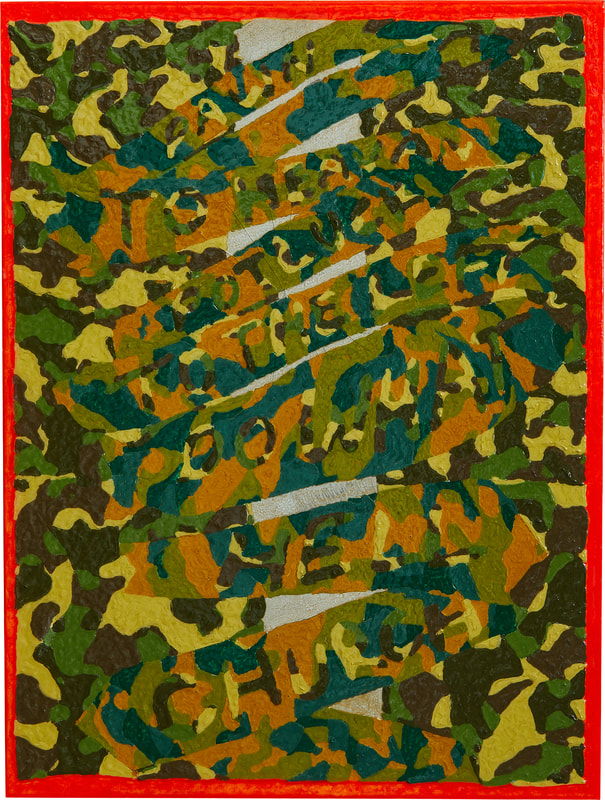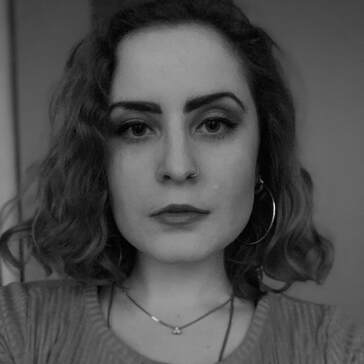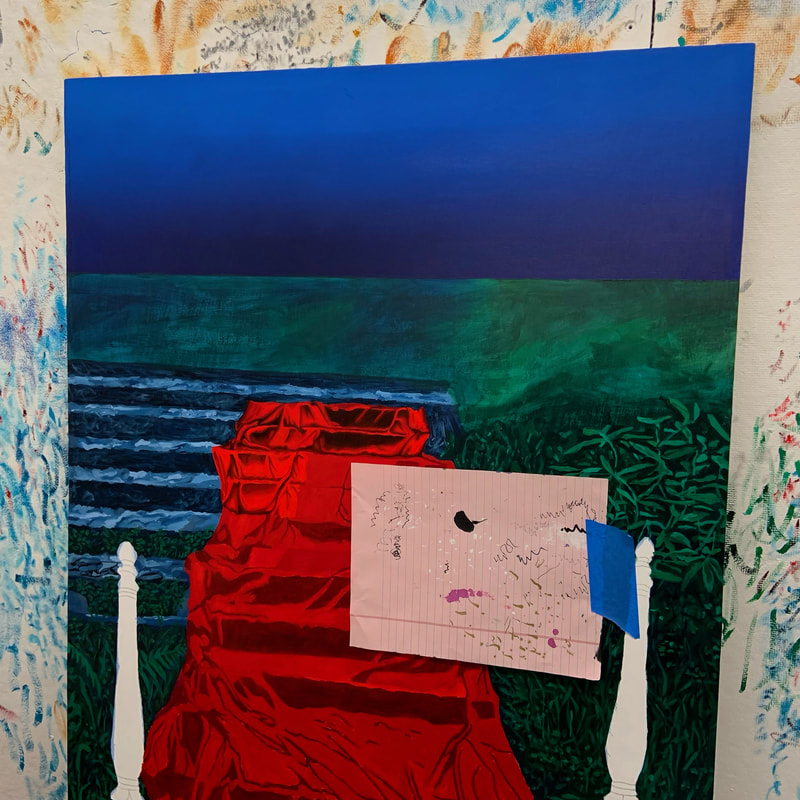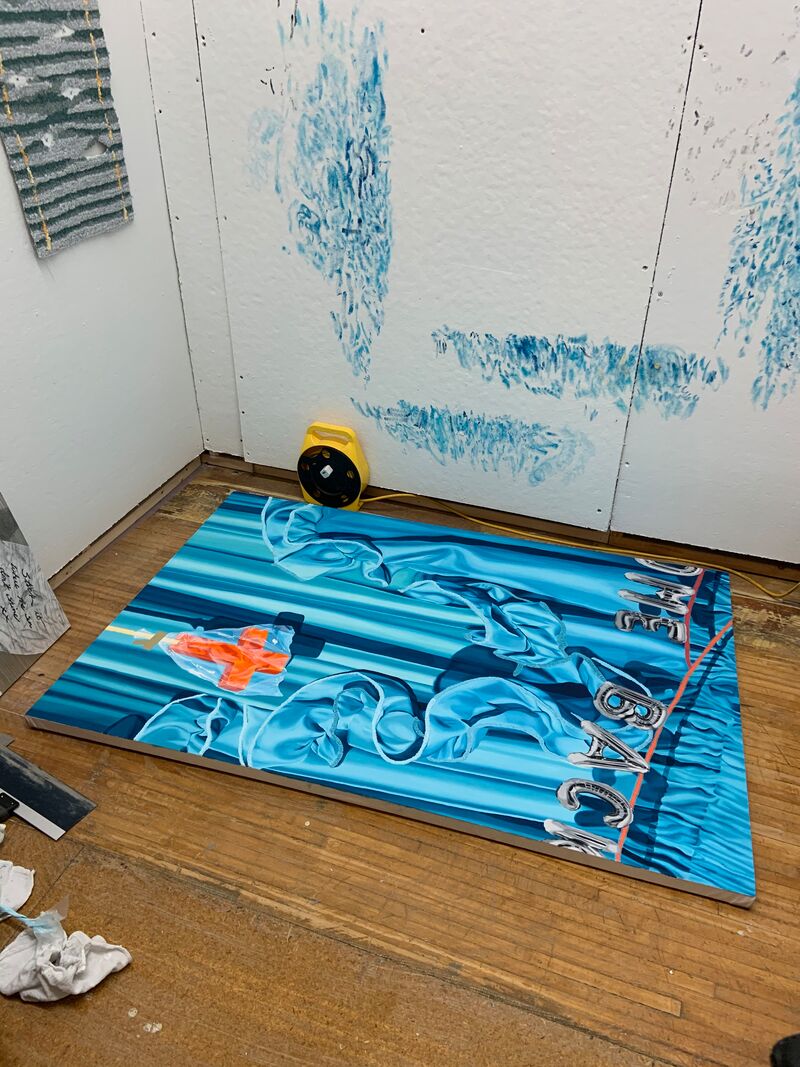JAMIE EARNEST (b. 1994, Alabama) received her BFA from Carnegie Mellon University in 2016. Earnest’s paintings and sculptures explore themes of classic southern heritage and virtues. Playful in both her use of form and material, such as cement and foil, Earnest toys with the juxtaposition of ambiguity and familiarity. Using specific symbols and narratives, Earnest aims to take ideas of a virtuous southern upbringing and contrast them with an underlying narrative of the current political and social climate of her home state. Earnest has exhibited her work at the Westmoreland Museum of Art, Greensburg; Andy Warhol Museum, Pittsburgh; Brew House Association, Pittsburgh; Cindy Lisica Gallery, Houston and Equity Gallery, New York. Earnest lives and works in Pittsburgh.
Published on April 13th, 2022. Artist responses collected in months previous.
What are you currently excited about in your art practice?
Over the past year and half I have been radically embracing failure. By accepting the reality of probable failure, I have been able to push myself more within my work. I am allowing myself to think in ways I wouldn’t normally, with the comfort of being able to let go of a failure and move on. Learning to reassess, regroup, let go, and apply newfound knowledge has been liberating. Although I have been creating work more slowly while using this process, I feel it has been more rewarding. Let go, move on, and breathe.
What were some of the challenges you faced last year as an artist? Was your work/ art practice affected by the pandemic this year, if so how?
I spent 2021 rekindling my relationship with painting after taking a hiatus in Fall of 2019. I spent much of 2020 making sculpture and fiber work. Spending that year working in a totally different medium gave me a new insight into how I use and apply paint, how I think about space and tension, and the materiality of paint itself.
Because the pandemic had cancelled or rescheduled all of my upcoming exhibitions and events, I had the majority of 2021 to make work without a deadline in mind. I was able to reawaken my love for painting free of boundaries while also practicing failure. This was not necessarily an easy road in the beginning. I spent many days turning my painting against a wall in the closet or hallway. I abandoned in-progress paintings and other works. I had to challenge myself to learn how to let go, letting go of paintings that won’t resolve themselves in a neat little package. Instead, I took mental bits and pieces from my painting graveyard and resurrected them in a new light. I’m still a novice in the failure department, but I am a better artist for having embraced radical failure and acceptance.
What does a typical day in the studio (or wherever you're making work) look like for you these days? What time of day are you at your studio, what are your studio must haves (ex: music, coffee, tools, etc), and what does your creative space look like?
Upon arrival to my studio, I change into my dedicated painting outfit: a sweatshirt with upwards of 10 years’ worth of paint smeared on the arms, and a painting apron. This apron is extremely special to me. Growing up in a small town in Alabama, our public schools did not offer art classes. However, I took after-school art classes led by a family friend, Michele, who hosted a handful of kids at her dining room table. After a couple of years of Michele’s classes, she gifted her group of students with personalized aprons with each of our names on the front. I received this apron when I was around 13-14 years old, and I still use it to this day, 14 years later. Michele was one of the first adults who truly fostered my creativity and artistic explorations. Caked in paint, unable to read any text that was once present on the front, I have tried to retire this apron. I have tried other aprons, but nothing feels at home like Michele’s apron does. There is something so familiar and resilient that radiates from that apron – it makes my studio practice complete.
What resources for artists have you found helpful that may be helpful for other artists?
1. The Artist’s Contract – a project by lawyer Susan Schwartz and artist Virginia Broersma that reexamines artist’s rights and strive to redesign the typical artist contract. They host workshops and webinars for artists.
2. Foundwork - Foundwork is an independent platform for emerging and mid-career artists to share their work with people across the global contemporary art community.
3. Windsor & Newton Masterclass Email Newsletter - a great subscription with video tutorials, painting technique tips, color theory and more.
What in your art career are you looking forward to in the upcoming year? Do you have any specific goals or projects in mind?
I am looking forward to a solo exhibition in Spring 2022 at the here gallery in Pittsburgh. I am currently waiting to hear back from a couple of residencies for the 2022 season. But nonetheless, I am eager to spend a lot of time in my studio and challenge myself to work with a more open mind and process. I have a few books lined up that I want to read that I feel will influence my practice and artistic concepts.
What are you currently excited about in your art practice?
Over the past year and half I have been radically embracing failure. By accepting the reality of probable failure, I have been able to push myself more within my work. I am allowing myself to think in ways I wouldn’t normally, with the comfort of being able to let go of a failure and move on. Learning to reassess, regroup, let go, and apply newfound knowledge has been liberating. Although I have been creating work more slowly while using this process, I feel it has been more rewarding. Let go, move on, and breathe.
What were some of the challenges you faced last year as an artist? Was your work/ art practice affected by the pandemic this year, if so how?
I spent 2021 rekindling my relationship with painting after taking a hiatus in Fall of 2019. I spent much of 2020 making sculpture and fiber work. Spending that year working in a totally different medium gave me a new insight into how I use and apply paint, how I think about space and tension, and the materiality of paint itself.
Because the pandemic had cancelled or rescheduled all of my upcoming exhibitions and events, I had the majority of 2021 to make work without a deadline in mind. I was able to reawaken my love for painting free of boundaries while also practicing failure. This was not necessarily an easy road in the beginning. I spent many days turning my painting against a wall in the closet or hallway. I abandoned in-progress paintings and other works. I had to challenge myself to learn how to let go, letting go of paintings that won’t resolve themselves in a neat little package. Instead, I took mental bits and pieces from my painting graveyard and resurrected them in a new light. I’m still a novice in the failure department, but I am a better artist for having embraced radical failure and acceptance.
What does a typical day in the studio (or wherever you're making work) look like for you these days? What time of day are you at your studio, what are your studio must haves (ex: music, coffee, tools, etc), and what does your creative space look like?
Upon arrival to my studio, I change into my dedicated painting outfit: a sweatshirt with upwards of 10 years’ worth of paint smeared on the arms, and a painting apron. This apron is extremely special to me. Growing up in a small town in Alabama, our public schools did not offer art classes. However, I took after-school art classes led by a family friend, Michele, who hosted a handful of kids at her dining room table. After a couple of years of Michele’s classes, she gifted her group of students with personalized aprons with each of our names on the front. I received this apron when I was around 13-14 years old, and I still use it to this day, 14 years later. Michele was one of the first adults who truly fostered my creativity and artistic explorations. Caked in paint, unable to read any text that was once present on the front, I have tried to retire this apron. I have tried other aprons, but nothing feels at home like Michele’s apron does. There is something so familiar and resilient that radiates from that apron – it makes my studio practice complete.
What resources for artists have you found helpful that may be helpful for other artists?
1. The Artist’s Contract – a project by lawyer Susan Schwartz and artist Virginia Broersma that reexamines artist’s rights and strive to redesign the typical artist contract. They host workshops and webinars for artists.
2. Foundwork - Foundwork is an independent platform for emerging and mid-career artists to share their work with people across the global contemporary art community.
3. Windsor & Newton Masterclass Email Newsletter - a great subscription with video tutorials, painting technique tips, color theory and more.
What in your art career are you looking forward to in the upcoming year? Do you have any specific goals or projects in mind?
I am looking forward to a solo exhibition in Spring 2022 at the here gallery in Pittsburgh. I am currently waiting to hear back from a couple of residencies for the 2022 season. But nonetheless, I am eager to spend a lot of time in my studio and challenge myself to work with a more open mind and process. I have a few books lined up that I want to read that I feel will influence my practice and artistic concepts.
Find Jamie Earnest on Instagram
